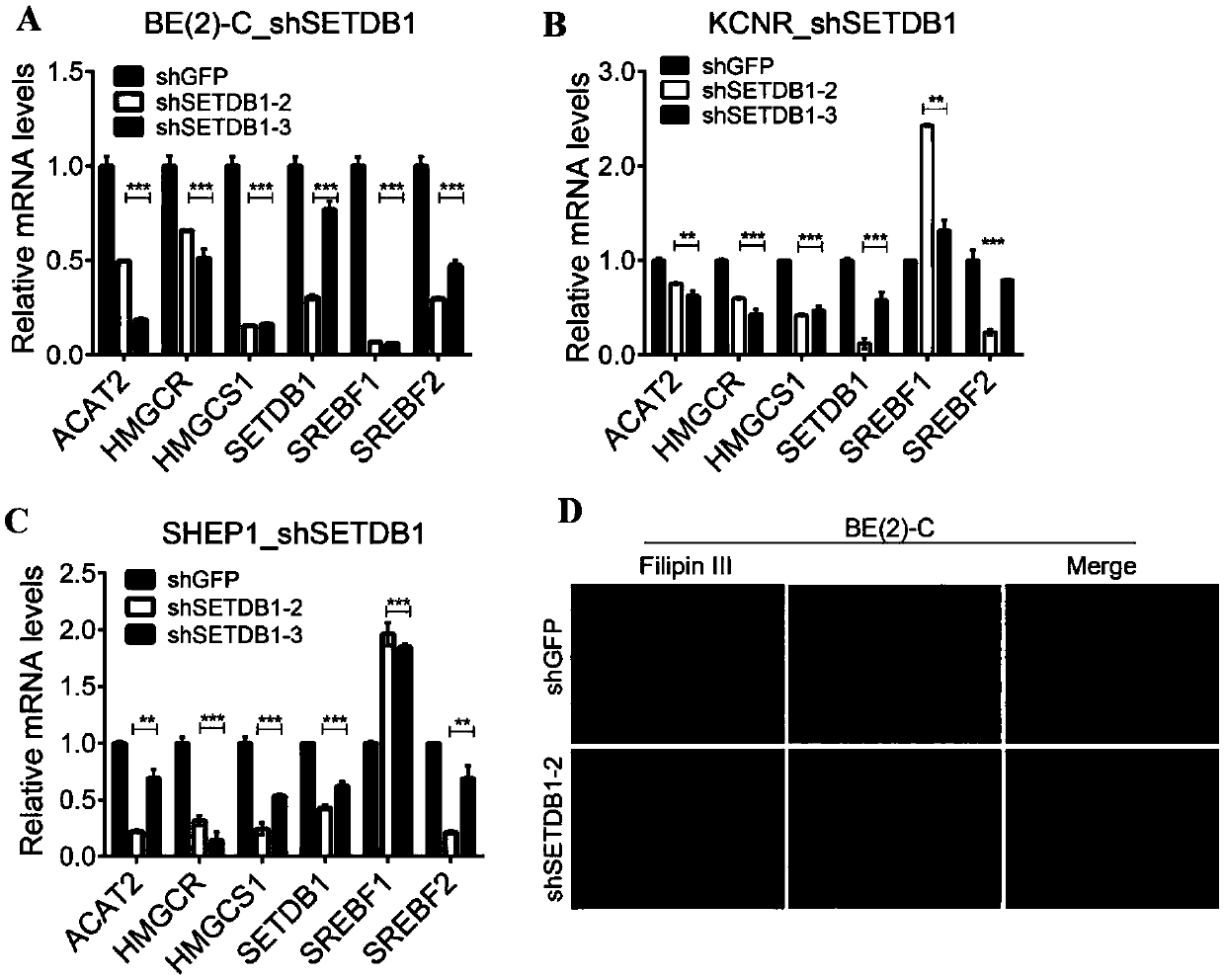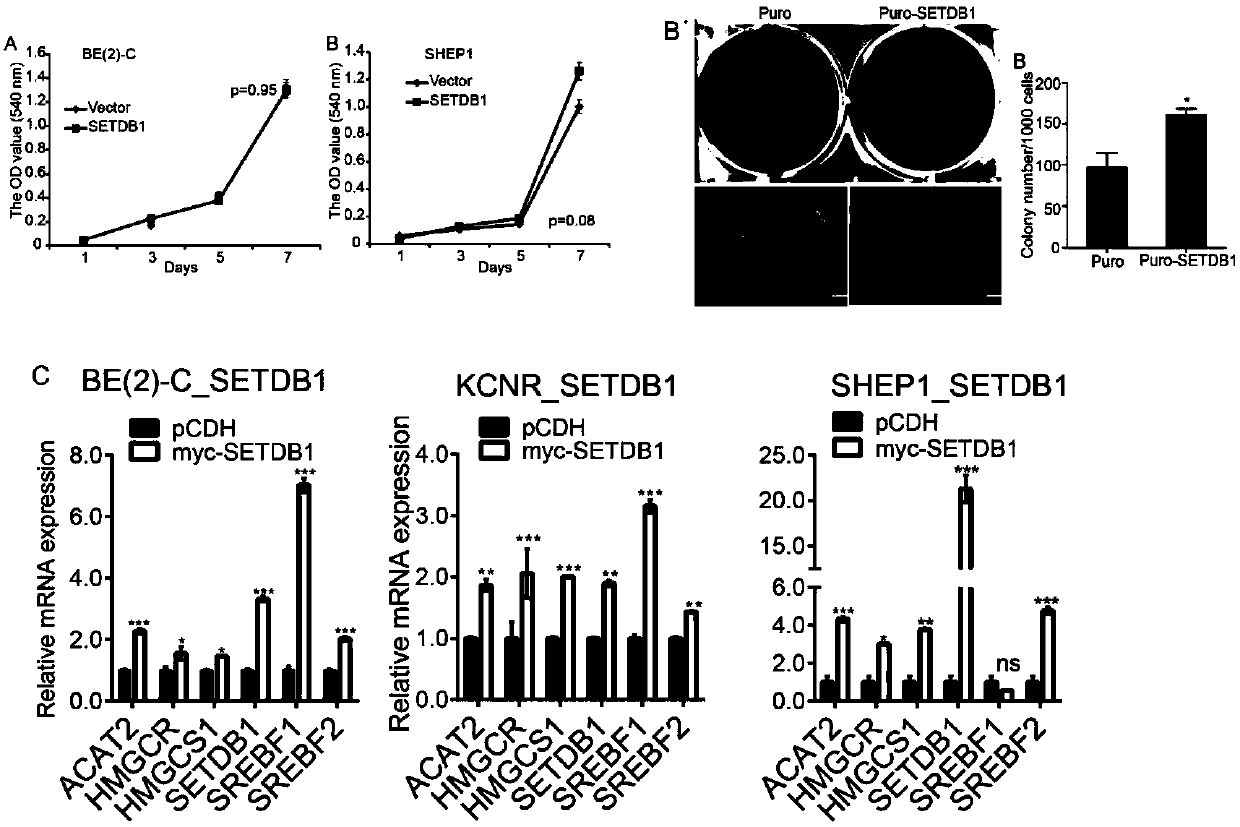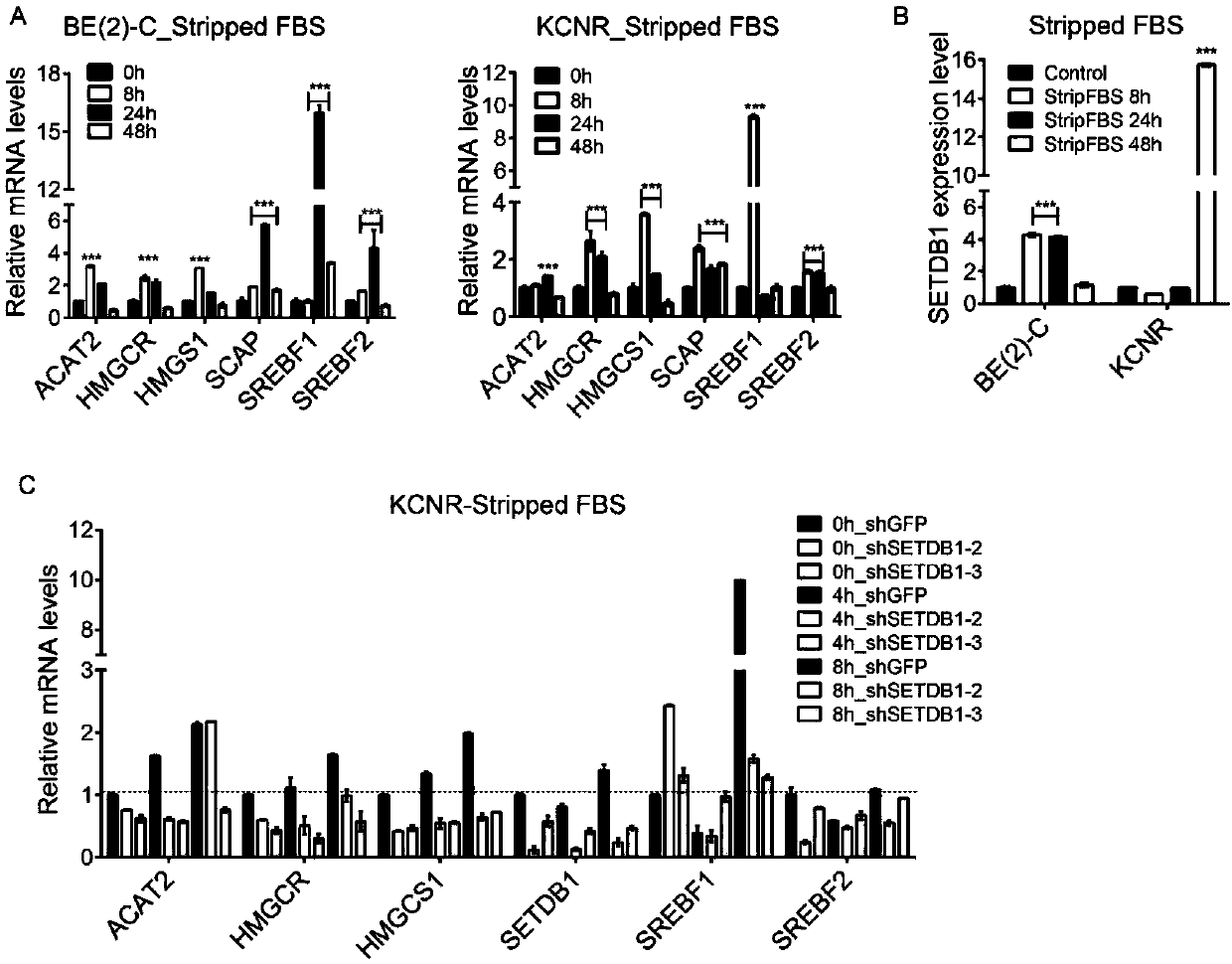Application of SETDB1 to adjusting and controlling of cholesterol ways
A cholesterol and pathway technology, applied in the field of biomedicine, can solve the problems of high degree of malignancy, high heterogeneity, easy transfer, etc., and achieve the effect of promoting expression
- Summary
- Abstract
- Description
- Claims
- Application Information
AI Technical Summary
Problems solved by technology
Method used
Image
Examples
Embodiment 1
[0054] Example 1. Down-regulation of SETDB1 inhibits Cholesterol pathway gene expression and Cholesterol content in neuroblastoma
[0055] Neuroblastoma cells BE2-C were cultured in DMEM / F12 medium containing 10% fetal bovine serum (FBS), and SHEP1 cells were cultured in DMEM medium containing 10% fetal bovine serum (FBS), KCNR was cultured in RPMI 1640 medium containing 10% fetal bovine serum (FBS). All cells were added with 1% penicillin and streptomycin, and subcultured when the cell growth density reached 80-90%.
[0056] Treatment of activated carbon-filtered serum: culture the cells under normal medium conditions, and replace the medium when the cell density is about 70%, replace the normal fetal bovine serum with activated carbon-filtered serum, and use SETDB1 shRNA carrier transformation 8h, 12h, Samples were taken at 24 hours, and the expression of ACAT2, HMGCR, HMGCS1, SREBF2, and SREBF1 genes related to the Cholesterol pathway was detected, and the results were as ...
Embodiment 2
[0058] Example 2, the influence of SETDB1 on the Cholesterol pathway of neuroblastoma
[0059] In order to further study the influence of SETDB1 on the Cholesterol pathway, the pLP1, pLP2, pLP / VSVG (Invitrogene) three-plasmid packaging system was used for lentiviral packaging. The lentiviral vector pCDH-CMV-MCS-EF1-Puro- SETDB1 and infection of BE2-C and SHEP1 cells, overexpression of SETDB1 in neuroblastoma, the results are as follows figure 2 shown. The results showed that overexpression of SETDB1 did not significantly increase the proliferation of neuroblastoma ( figure 2 , A), but can significantly increase the colony formation ability of soft agar ( figure 2 , B). By detecting genes related to the Cholestero pathway, it was found that upregulation of SETDB1 could significantly increase the expression of ACAT2, HMGCR, HMGCS1, SREBF2, and SREBF1 genes ( figure 2 , C).
Embodiment 3
[0060] Example 3, SETDB1 responds to Cholesterol pathway in neuroblastoma after Charcoal Stripped FBS treatment
[0061] Early studies have shown that when cells are cultured with FBS treated with Charcoal, due to the lack of lipids such as sterols, the fatty acid metabolism pathway in the cells is significantly increased, and the corresponding cholesterol pathway is also activated. In this study, the cells were cultured with FBS treated with Charcoal, and samples were taken at 8h, 24h, and 48h. The results are as follows: image 3 shown. The results showed that sterol pathway-related genes were found to be significantly upregulated in both BE2-C and KCNR cells ( image 3 , A). At the same time, the expression of SETDB1 was also significantly increased during this process, indicating that SETDB1 can be activated by Cholesterol-deficient medium ( image 3 , B), implying that SETDB1 has an important relationship with Cholesterol.
[0062] In order to clarify the role of SETD...
PUM
 Login to View More
Login to View More Abstract
Description
Claims
Application Information
 Login to View More
Login to View More - R&D
- Intellectual Property
- Life Sciences
- Materials
- Tech Scout
- Unparalleled Data Quality
- Higher Quality Content
- 60% Fewer Hallucinations
Browse by: Latest US Patents, China's latest patents, Technical Efficacy Thesaurus, Application Domain, Technology Topic, Popular Technical Reports.
© 2025 PatSnap. All rights reserved.Legal|Privacy policy|Modern Slavery Act Transparency Statement|Sitemap|About US| Contact US: help@patsnap.com



